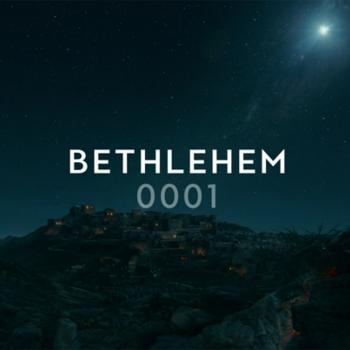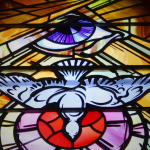John Dominic Crossan’s presidential address at SBL was incredibly interesting, and made fantastic use of technology to explore key elements in Eastern iconography depicting the resurrection – and that is what it is consistently referred to in ancient times, “the resurrection” (ἡ ἀνάστασις) and not “the resurrection of Christ.” The event is consistently corporate rather than individual as in Western depictions.
As you will notice in the example below, there are a number of elements which a comparison shows are consistently found in Eastern Orthodox art: Jesus taking Adam by the wrist, other figures from the Old Testament being present, Hades being trampled on, the gates of Hades broken and lying in a cross, and so on.

I found myself in the midst of a discussion at dinner later in the conference about Crossan’s suggestion that Adam represents humankind and thus the imagery is universalistic. There were voices of skepticism, emphasizing instead that the figures depicted are Old Testament saints and not just anyone.
While it is true that one does not see Cain or Judas included, one does see Adam and Solomon, whose fame is not connected with their piety. Stories were invented of their repentance, but that doesn’t necessarily mean there is not a sort of universalism present. Is there anyone for whom a story of repentance could not be concocted? And so at the very least, the imagery is compatible with universalism.
In having Jesus grasp Adam by his limp wrist, the message appears to be that Adam – and human beings in general – contribute nothing to their salvation. It is God in Christ grabbing hold of human beings and saving us that accomplished salvation, and nothing else. That is far more of a pure message of grace than one finds in many Protestant contexts.
 Crossan suggested that the corporate view is closer to the Jewish background of Christianity than the Western view emphasizing the uniqueness of Jesus’ resurrection as a lone individual. (The clip art on the right is just one example of the Western tradition of art depicting Jesus’ resurrection that I happened to come across. Crossan showed a few examples towards the start of his talk).
Crossan suggested that the corporate view is closer to the Jewish background of Christianity than the Western view emphasizing the uniqueness of Jesus’ resurrection as a lone individual. (The clip art on the right is just one example of the Western tradition of art depicting Jesus’ resurrection that I happened to come across. Crossan showed a few examples towards the start of his talk).
Crossan also emphasized that the depiction is much harder to treat literally (although Matthew’s Gospel is sometimes thought to do just that). The opening of every tomb and the resurrection of those who lay within is an event which is either publicly and undeniably visible, or symbolic.
What do readers think? How if at all is the message in Eastern Orthodox depictions of the Resurrection different from what one typically encounters in the Western traditions of Christianity?
















